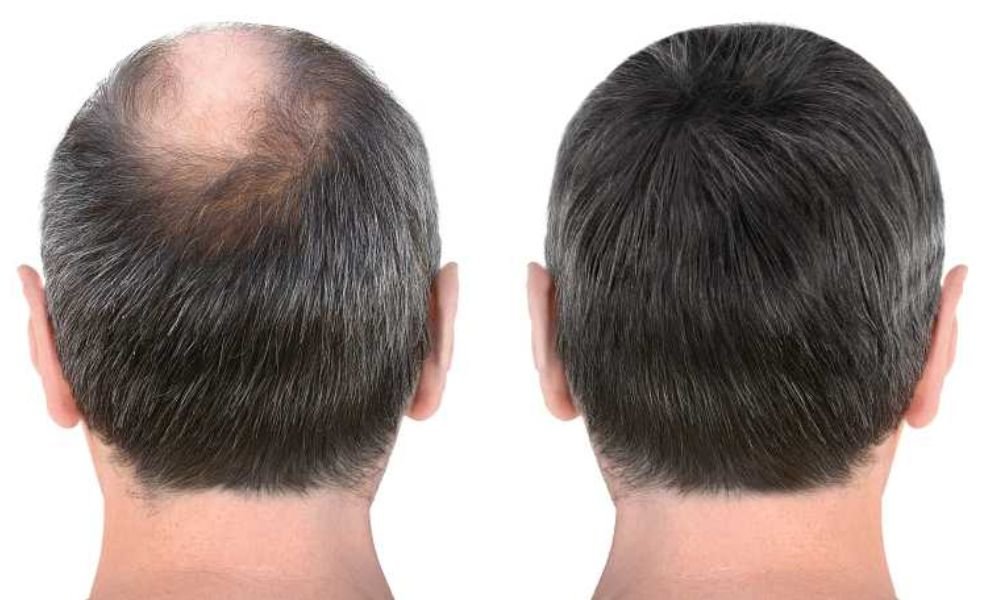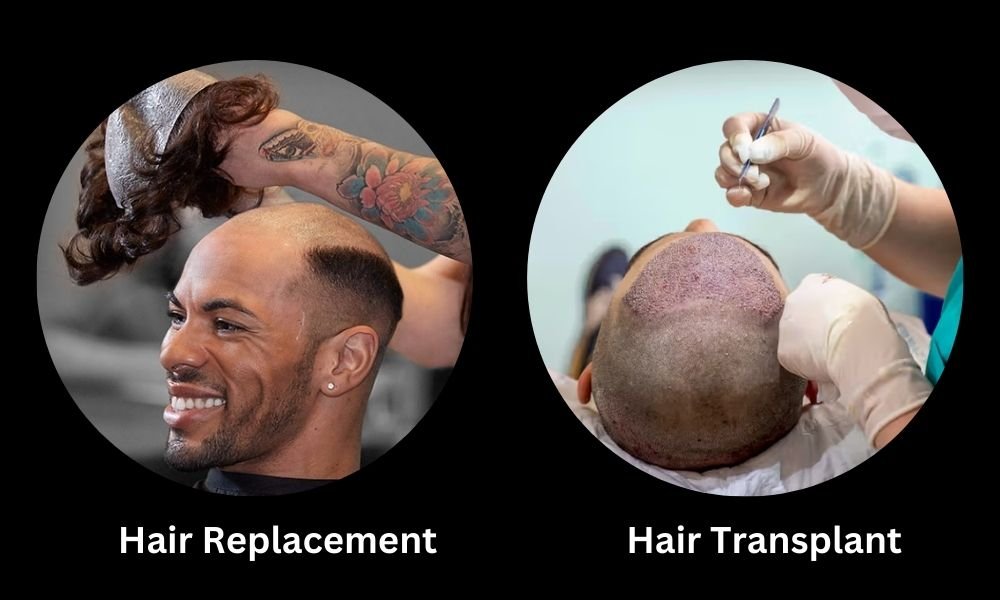In the realm of hair restoration, non-surgical hair replacement has emerged as a popular alternative to invasive procedures. But what exactly does it entail? Non-surgical hair replacement involves the application of customized hairpieces to cover areas of hair loss or thinning. These hair systems are meticulously crafted to match the color, texture, and density of the wearer’s natural hair, providing a seamless and natural-looking solution.
Understanding Non-Surgical Hair Replacement
Non-surgical hair replacement offers individuals struggling with hair loss a non-invasive option to regain confidence and redefine their appearance. Unlike surgical procedures such as hair transplants, which involve harvesting and implanting hair follicles, non-surgical methods provide immediate results without the need for lengthy recovery times.
Types of Non-Surgical Hair Replacement Options
Non-surgical hair replacement encompasses a range of options tailored to each individual’s unique needs. From full-head systems to partial units and custom-made solutions, there are options available for individuals dealing with varying degrees of hair loss. These hairpieces are crafted using high-quality materials and advanced techniques to ensure comfort, durability, and a natural appearance.
Advantages and Disadvantages of Non-Surgical Methods
The Benefits of Non-Surgical Hair Replacement
- Immediate Results and Convenience: Non-surgical hair replacement offers immediate results, allowing individuals to achieve a fuller head of hair in a matter of hours. Moreover, it provides a convenient solution for those seeking to address hair loss without the need for invasive procedures.
- Customization and Versatility: One of the primary advantages of non-surgical hair replacement is its customization. Hairpieces are tailored to match the wearer’s natural hair color, texture, and density, ensuring a seamless blend with existing strands. Additionally, individuals can choose from a variety of options to suit their preferences and lifestyle.
- Accessibility and Affordability: Non-surgical hair replacement is more accessible and affordable than surgical procedures, making it an attractive option for individuals seeking a cost-effective solution to hair loss. With minimal maintenance requirements and the ability to achieve desired results quickly, it appeals to a broad demographic.
Challenges and Considerations
- Stigma and Social Perception: Despite its effectiveness, non-surgical hair replacement may be subject to stigma and social judgment. Some individuals may perceive wearing hairpieces as unnatural or indicative of vanity, leading to hesitancy or reluctance to explore non-surgical options.
- Maintenance Requirements and Longevity: Proper maintenance is crucial for ensuring the longevity and performance of non-surgical hair replacement. Without regular care and attention, hairpieces may lose their shape, color, or texture, diminishing their aesthetic appeal and durability.
- Individual Preferences and Expectations: The decision to pursue non-surgical hair replacement ultimately depends on individual preferences, priorities, and expectations. While it may be a suitable option for some, others may prefer alternative approaches or embrace natural changes.
Navigating the Decision-Making Process
Factors to Consider When Choosing Non-Surgical Hair Replacement
- Personal Goals and Priorities: Before opting for non-surgical hair replacement, individuals should consider their personal goals and priorities. Whether seeking to regain confidence, enhance appearance, or explore temporary solutions, aligning with personal values is essential.
- Professional Guidance and Expertise: Seeking guidance from hair restoration professionals can help individuals make informed decisions about non-surgical options. Experts can assess individual needs, recommend suitable solutions, and provide guidance on maintenance and upkeep.
- Lifestyle and Maintenance Commitments: It’s important to consider lifestyle factors and maintenance commitments when choosing non-surgical hair replacement. Factors such as climate, humidity, and daily activities can impact the durability and performance of hair systems, requiring ongoing care and attention.
Making Informed Decisions
- Weighing the Benefits and Drawbacks: When considering non-surgical hair replacement, it’s essential to weigh the benefits against the potential drawbacks. While it offers immediate results and customization options, challenges such as stigma and maintenance requirements should be carefully considered.
- Exploring Alternative Options: Non-surgical hair replacement is just one of many options available for individuals dealing with hair loss. Exploring alternative approaches, such as topical treatments, supplements, or embracing natural changes, can provide additional perspective and options.
- Embracing Individuality and Self-Expression: Ultimately, the decision to pursue non-surgical hair replacement should align with individual values and goals. Whether choosing surgical or non-surgical interventions, embracing one’s unique beauty and self-expression is paramount.
The Hair Dilemma
The Hair Dilemma presents a nuanced challenge for individuals grappling with hair loss, seeking the best non-surgical hair replacement solution. Amidst societal pressures and personal preferences, finding the ideal option requires careful consideration. Non-surgical hair replacement stands out as a versatile and accessible choice, offering immediate results, customization, and affordability. By addressing the hair dilemma with informed decision-making and embracing individuality, non-surgical options can empower individuals to regain confidence and redefine their appearance.
Conclusion
In navigating the complexities of hair loss and restoration, it’s essential to approach the decision-making process with an open mind and a thorough understanding of available choices. Whether opting for surgical or non-surgical interventions, seeking professional guidance and exploring all available resources can empower individuals to make informed decisions that align with their goals and values.
Don’t Miss: Difference Between Hair Replacement and Hair Transplant


